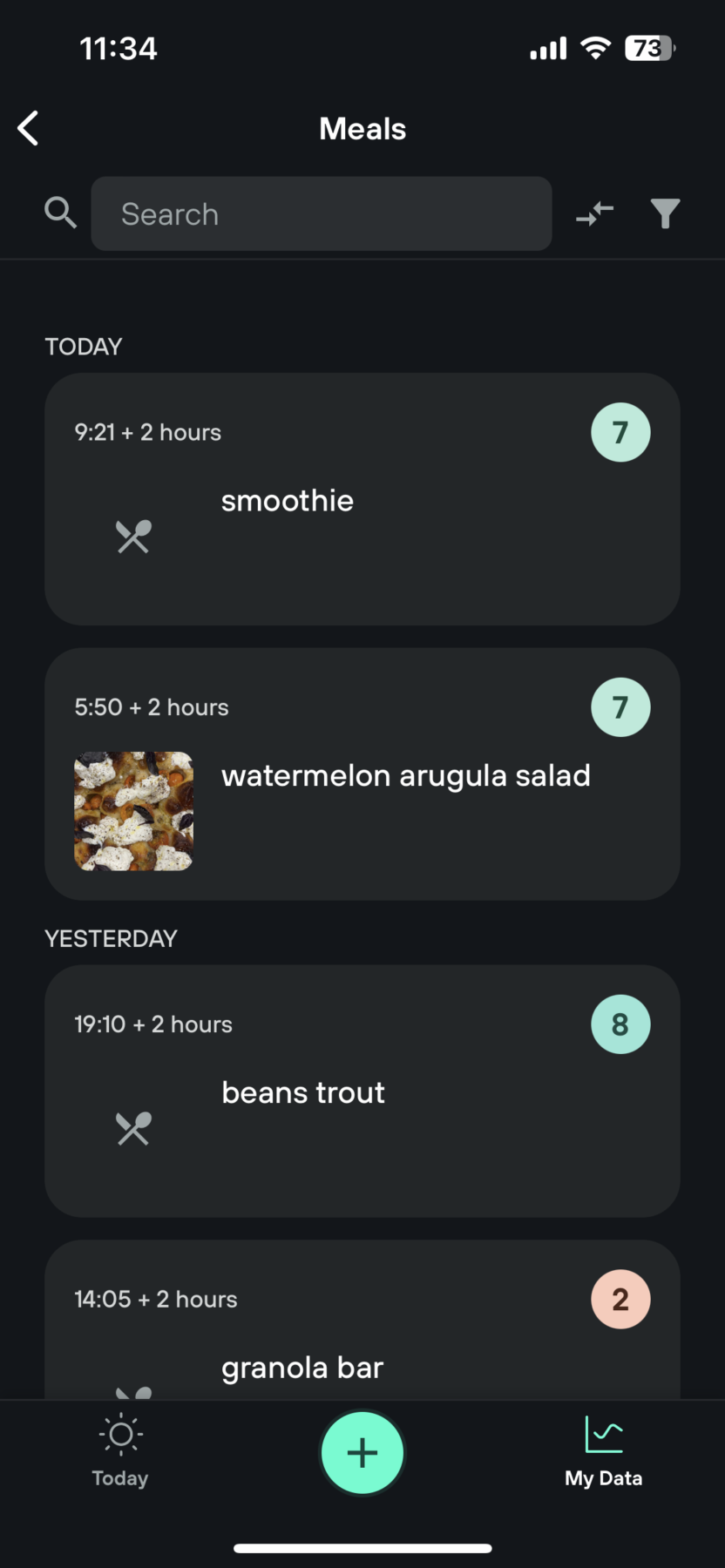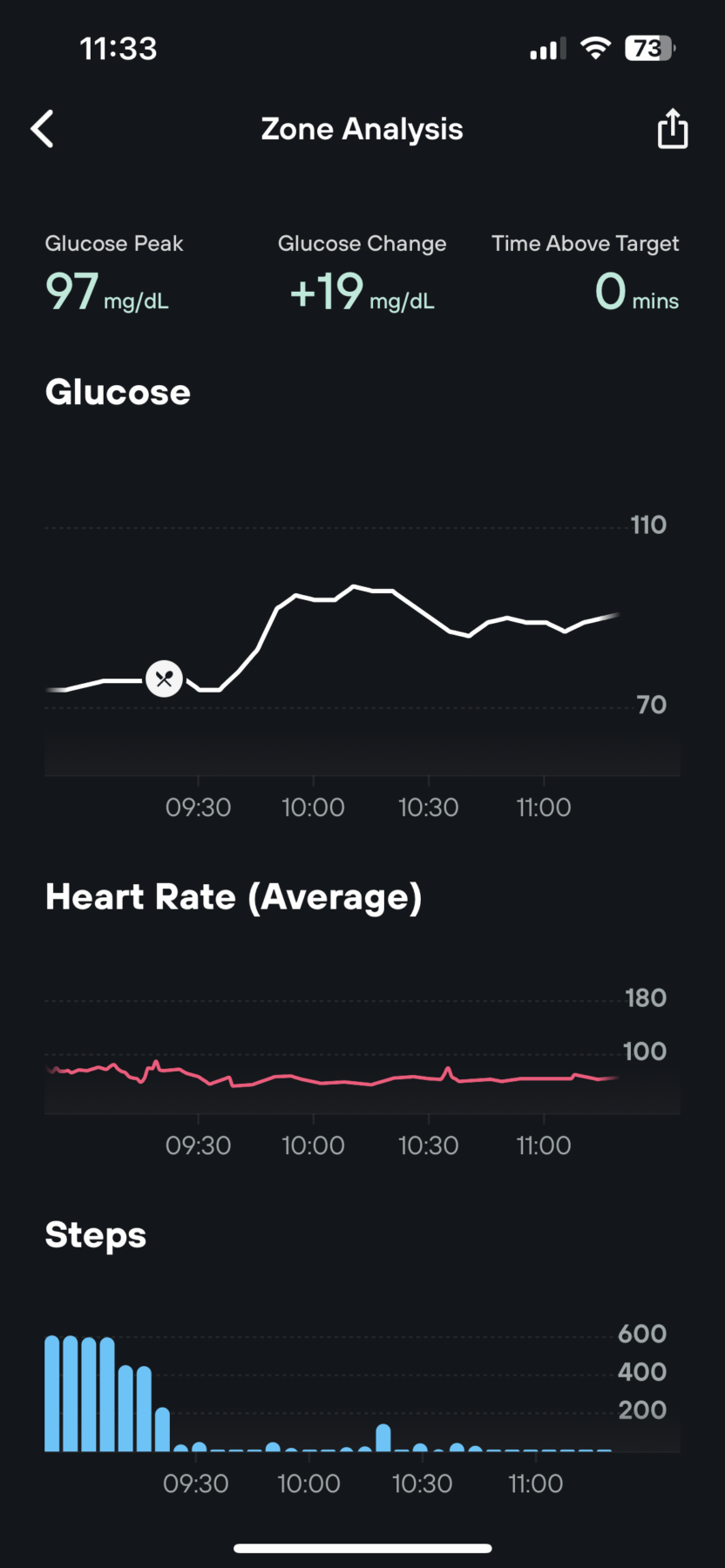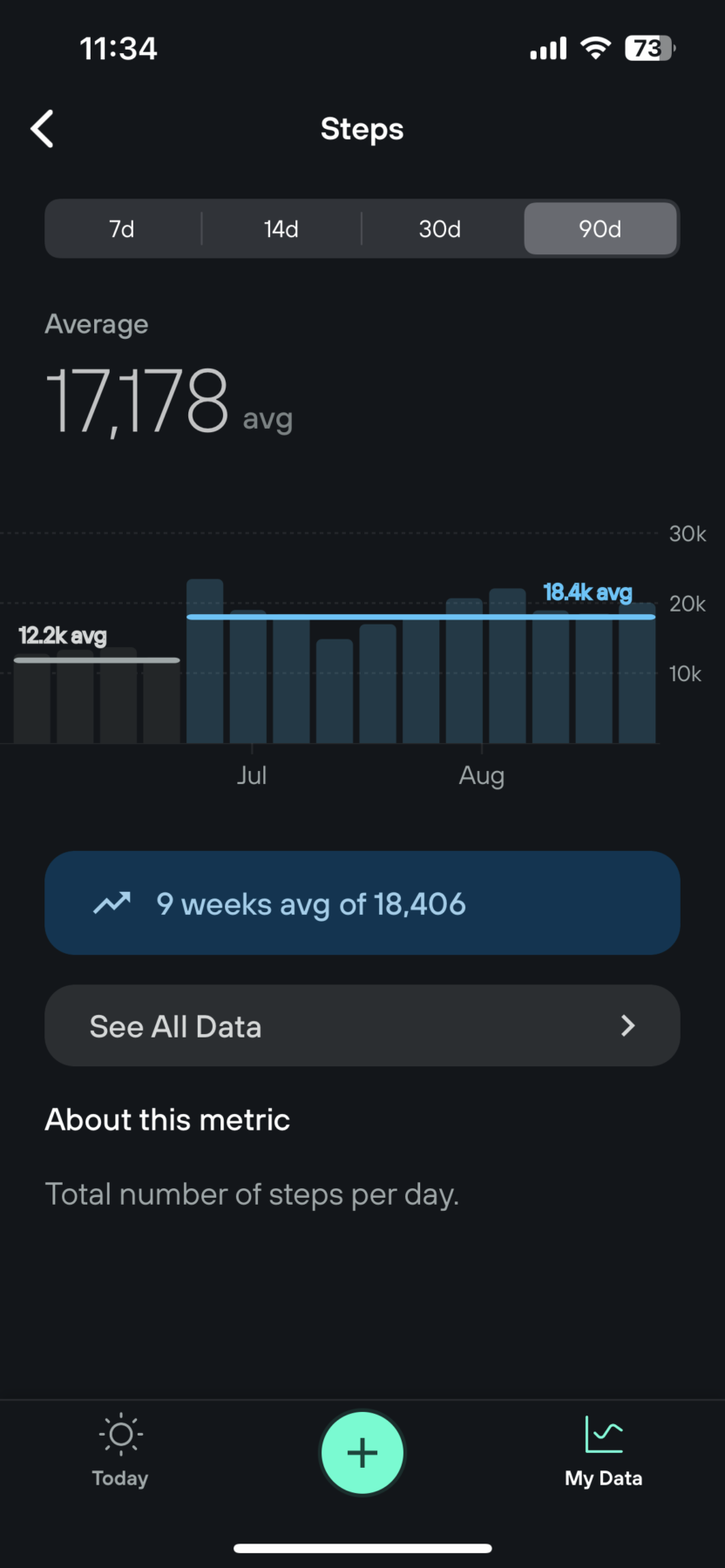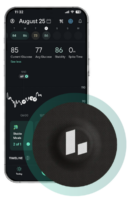Metabolic health encompasses all the processes through which your body makes and uses energy, so it’s inextricably linked to exercise, when our energy demands are at their highest. When our metabolic systems function optimally, our bodies can efficiently use the best fuel, and we can perform at our peak.
At the same time, exercise improves metabolic fitness—both in the short term, helping us clear glucose from our blood, as well as in the long term, enhancing everything from insulin sensitivity to mitochondrial functioning.
Here are four ways that Levels can help you optimize how your fitness and metabolic health interact.
Levels helps you build metabolic flexibility
Our bodies always use some mixture of two sources of energy: glucose and fat. Generally, we prioritize glucose (especially during periods of high exertion, like intense workouts) and fat, either when our glucose stores are low or when we’re performing prolonged low-intensity exercise. Metabolic flexibility is the ability of our body to switch quickly and efficiently between these two energy sources. When it can’t, you get effects like the dreaded “bonk” when your glucose is low, but your body isn’t switching easily to fat.
The key to training metabolic flexibility is to keep glucose stable, forcing your body to utilize fat stores more readily. This is sometimes called being fat-adapted and can enable some athletes to do things like run marathons fasted. This can be beneficial because our body has much more stored fat than glucose—about 80-85% of an average adult’s stored energy is fat—and fat contains twice the energy potential as glucose. When our glucose is high, we also tend to have high insulin, the hormone that shuttles glucose into cells. But insulin impairs fat burning, so our body continues to burn glucose (or stored glucose, called glycogen) and has trouble switching to fat.
How Levels Helps:
Levels shows you which foods drive a high blood sugar response and which help you maintain stable levels. You can track your meals so you remember which serve you best and get suggestions for other foods to try.

Levels scores your meals so you can keep track of which were best for glucose response.
Levels helps you fuel efficiently
While metabolic flexibility is the goal, we also want to ensure we’re fueling appropriately for the type of exercise we’re doing. For example, if we’re about to do a HIIT or CrossFit workout, we may want to consume more carbohydrates just before and during the activity to give our body readily available energy for these high-intensity levels. But if we take in too many carbs or eat too early before a workout, we can trigger a blood sugar spike and crash, leaving us feeling groggy and depleted.
How Levels Helps:
Levels can help you experiment with different fueling strategies by watching how your body responds to various foods and timing. Because you can see real-time continuous feedback, and Levels imports workout data from your phone, you can watch your complete glycemic response from eating through your workout. Ideally, you’re aiming for rises of no more than around 30 mg/dL.

Levels shows you how your glucose changed during a workout.
Levels helps you eat for better recovery
Replenishing your energy stores after a workout is crucial for optimal recovery, but we also want to be intentional about what we eat and when. Too many carbs and we’ll overwhelm our system and just build fat (it may also leave us feeling bloated); too little and we won’t fully rebuild our glycogen stores for our next workout.
Just as in fueling, in recovery, we want to keep our variability within 30 mg/dL and see our glucose levels come back down within 2–3 hours. Eating carbs with protein and fat will help blunt the glucose response even as you consume higher amounts of carbohydrates. Avoiding refined grains and added sugars (like in some sports drinks) will also help prevent counter-productive glucose spikes.
How Levels Helps:
Like fueling, Levels can give you a clear assessment of your recovery strategy by showing you your glucose response to different post-workout meals. You can easily see how high your glucose climbs and when it returns to baseline. Meal scoring and stability tracking give you simple metrics for assessing your results.
Levels shows you the impact of exercise on your metabolic health over time
Exercise is one of the best things you can do to improve your overall health and your metabolic health over time—whether slow and steady like Zone 2 workouts or more intense like HIIT. Even weight training has a long-term impact on our ability to make and use energy efficiently.
That’s because muscle tissue is one of the best sinks for glucose—it can absorb significant amounts without a corresponding rise in insulin. Over time, exercise improves our insulin sensitivity, so we get better at maintaining more stable glucose with lower insulin levels. This is crucial in staving off insulin resistance, a condition that leads to prediabetes and Type 2 diabetes, among other diseases. Exercise can also impact other vital metabolic markers like cholesterol, uric acid, and CRP.
How Levels Helps:
Levels shows you your glucose trends over weeks and months so that you can see the impact of lifestyle changes like more exercise. You’ll see fewer spikes and lower average glucose. In addition, our Levels Labs blood testing lets you check several of those other markers as often as you like and see your results in the app so you can track improvements from test to test.

Levels shows you long-term trends, including data synced from Apple Health.
 Ready to improve your fitness with Levels?
Ready to improve your fitness with Levels?
Start taking action today to optimize your fitness and metabolic health so you can feel better and live a longer, healthier life. Levels members get access to the most advanced continuous glucose monitors (CGM) and an app that offers personalized guidance to build healthy, sustainable habits. Click here to learn more about Levels.









